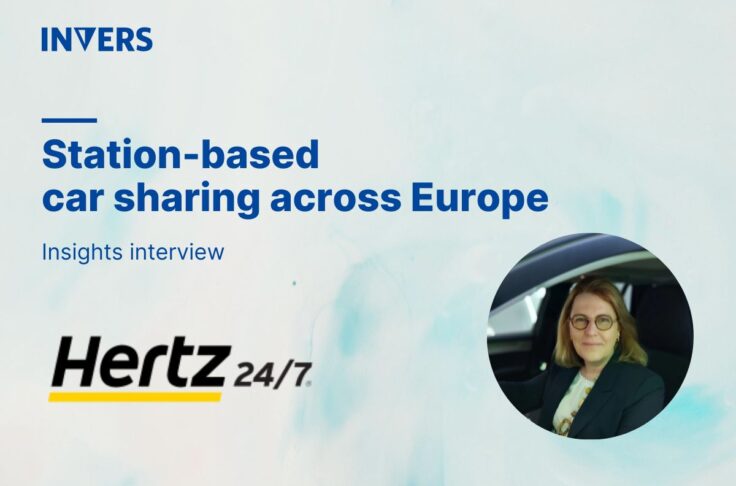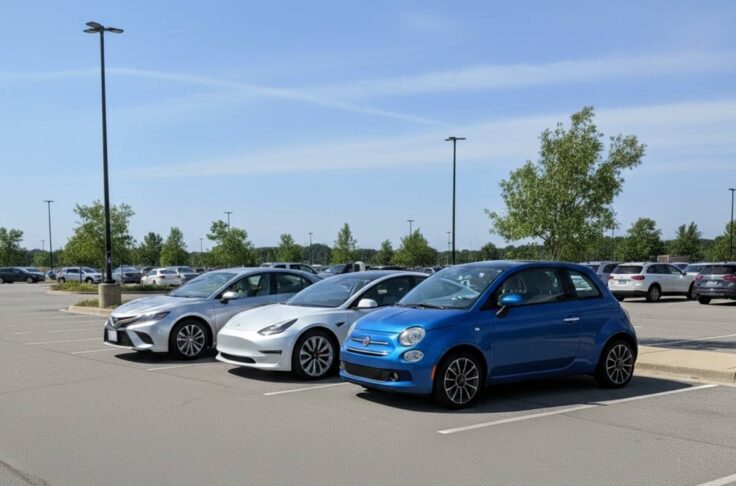Key Attributes of Connected Car Sharing Hardware

Summary
Connected car sharing hardware is the critical foundation for any modern car sharing service. This technology provides the essential link between your vehicles and your software platform, enabling real-time data monitoring, remote vehicle control, and process automation. Prioritizing key hardware attributes like reliability, security, and scalability is crucial for operators to maximize fleet efficiency, reduce operational costs, and deliver a seamless user experience.
The Rental That Never Happened
It’s 8:00 PM on Friday. A customer books one of your vehicles, ready for a weekend trip. They find the car, tap “unlock” in your app and nothing happens. The app spins. The customer taps again. Still nothing. The vehicle is parked in an underground garage, and your telematics unit has lost its connection. You’ve just lost a rental, gained an angry customer, and might even get a 1-star review.
This scenario is an operator’s nightmare, and it all comes down to one thing: the hardware.
Your service is only as good as its weakest link. A nice app and competitive pricing mean nothing if the user can’t reliably access the vehicle. Your connected car sharing hardware is the backbone of your entire operation. It’s the silent partner working 24/7 to execute commands, transmit data, and keep your fleet operational.
Key Attributes of Connected Car Sharing Hardware
With so many options, what hardware specifications should you prioritize to elevate your car sharing business to the next level? Here are five key attributes of connected car sharing hardware to look for:
Reliability and Durability
Reliability is the most important attribute of your car sharing hardware. It enables your customers to have a smooth user experience. Convenient bookings, easy vehicle access, and seamless rental experiences are all facilitated by reliable, always-on connectivity. This essential attribute reduces downtime, provides higher fleet availability for your customers, ensures hassle-free and delay-free processes, and thereby increases overall satisfaction.
The hardware should be durable enough to last for the entire vehicle lifecycle in your fleet. Hardware that requires frequent replacements is a liability for car-sharing operators. It’s costly, time-consuming, and necessitates taking cars out of service, resulting in lost revenue.
Real-Time Connectivity and Data Integration
As digital technology advances, data-driven fleet management is a powerful tool for any shared mobility business. With comprehensive data integration, you gain instant access to vehicle data such as GPS position, fuel level, operational status, and usage. This not only facilitates rapid decision-making, but also enables real-time monitoring of the vehicle’s health to prevent breakdowns.
Using live data enhances operational efficiency and improves customer service. It lets your support team control the vehicles’ immobilizers remotely, or open the central lock for vehicle access, thereby solving problems quickly with a few clicks.
Security and Compliance
Reliable car sharing hardware is equipped with sophisticated security and compliance features. By deterring unauthorized access to vehicles and the vehicle keys, it ensures only authorized users can operate them.
While all the technology allows operators to digitally manage their fleets, it must also comply with privacy regulations. None of the customer’s sensitive user data should be available to third parties. A protected telematics communications architecture ensures user data is handled and stored securely and shared only with authorized entities when needed.
Scalability and Flexibility
The car sharing market is still growing, with operators continuously seeking to expand their share by entering new regions or leveraging existing ones. Connected car sharing hardware must allow for flexible scaling and customization of your fleet without a complete system overhaul. Vehicle-agnostic scaling options are key because they support a variety of vehicle types and sizes. Flexible hardware allows for quick adjustments to new business models or market demands.
Once implemented, the system must also be scalable and flexible. Updates and preferences must be performed remotely via the fleet management tool to eliminate the need for manual hardware operation. The right hardware solution also allows operators to switch to any software while retaining the hardware or to add more features or models.
Analytics and Insights Generation
Collecting and analyzing car sharing data has become crucial for success. While gathering information on vehicle usage, driving patterns, and maintenance needs is relatively straightforward, the real challenge lies in extracting valuable insights and actionable information from this data. Effective analytics can transform raw data into strategic advantages, helping operators optimize their services and make informed decisions.
When connected to advanced car sharing software, reliable hardware allows operators to take advantage of additional solutions that help to optimize asset deployment:
- Driving Behavior Analysis: Identifies patterns of aggressive driving, enabling targeted interventions to improve safety and reduce vehicle wear and tear
- Damage Detection: Automatically detects and reports new damages, ensuring timely repairs and maintaining vehicles in good condition
- Fleet Utilization: Uses data to reduce idle times and maximize vehicle uptime

Car Sharing Hardware FAQ
What is car sharing hardware?
Car sharing hardware, often called a telematics unit or “black box”, is a physical device installed in a vehicle. It’s the central nervous system of a shared vehicle. It contains a GPS module, a cellular modem (like 4G/LTE-M), and Bluetooth capabilities. It communicates with your software platform to receive commands (like “unlock door”) and sends back real-time data (like location, fuel level, and mileage), effectively making any vehicle “sharing-ready”.
What is the difference between aftermarket hardware and OEM telematics?
OEM telematics are the connectivity systems built into vehicles by the manufacturer (e.g. Tesla). They are designed primarily for the consumer market. Aftermarket hardware, like the INVERS CloudBoxx, is a purpose-built, vehicle-agnostic solution designed specifically for the high-demand, 24/7 needs of shared mobility. It typically offers greater reliability, more robust features (like offline access), and the flexibility to operate any vehicle model in a single platform.
How does connected car hardware improve the customer experience?
It’s the key to a frictionless experience. Reliable hardware ensures the app “just works” every time a customer needs it. This means instant vehicle unlocking, no connection errors (even in garages thanks to Bluetooth), and accurate fuel or battery levels shown in the app. It builds trust and loyalty, which are the main drivers of positive user ratings.
What kind of data can car sharing hardware collect?
A modern telematics unit can collect a wide range of data by tapping into the vehicle’s CAN bus. This includes:
- Location: Real-time GPS.
- Operational: Odometer, fuel/battery level, engine status.
- Health: Diagnostic codes, tire pressure, service alerts.
- Security: Door/trunk lock status, window status, tamper alerts.
- Behavioral: Accelerometer and gyroscope data for driving analysis.
Choose the Industry-Leading Car Sharing Hardware
INVERS has been a leading technology provider in the car sharing industry for over 30 years, seeing our customers as partners since day one. Your success is our success. Our support team of highly experienced professionals is available to assist you and your business 24/7.
We understand the challenges operators face and have developed a range of solutions to address them effectively with our connected car sharing hardware. The INVERS CloudBoxx is the industry-leading car sharing telematics solution, allowing you to make any vehicle sharing-ready and benefit from unparalleled reliability.
Find out more on our INVERS CloudBoxx and learn how you can become INVERS’ next success story!


